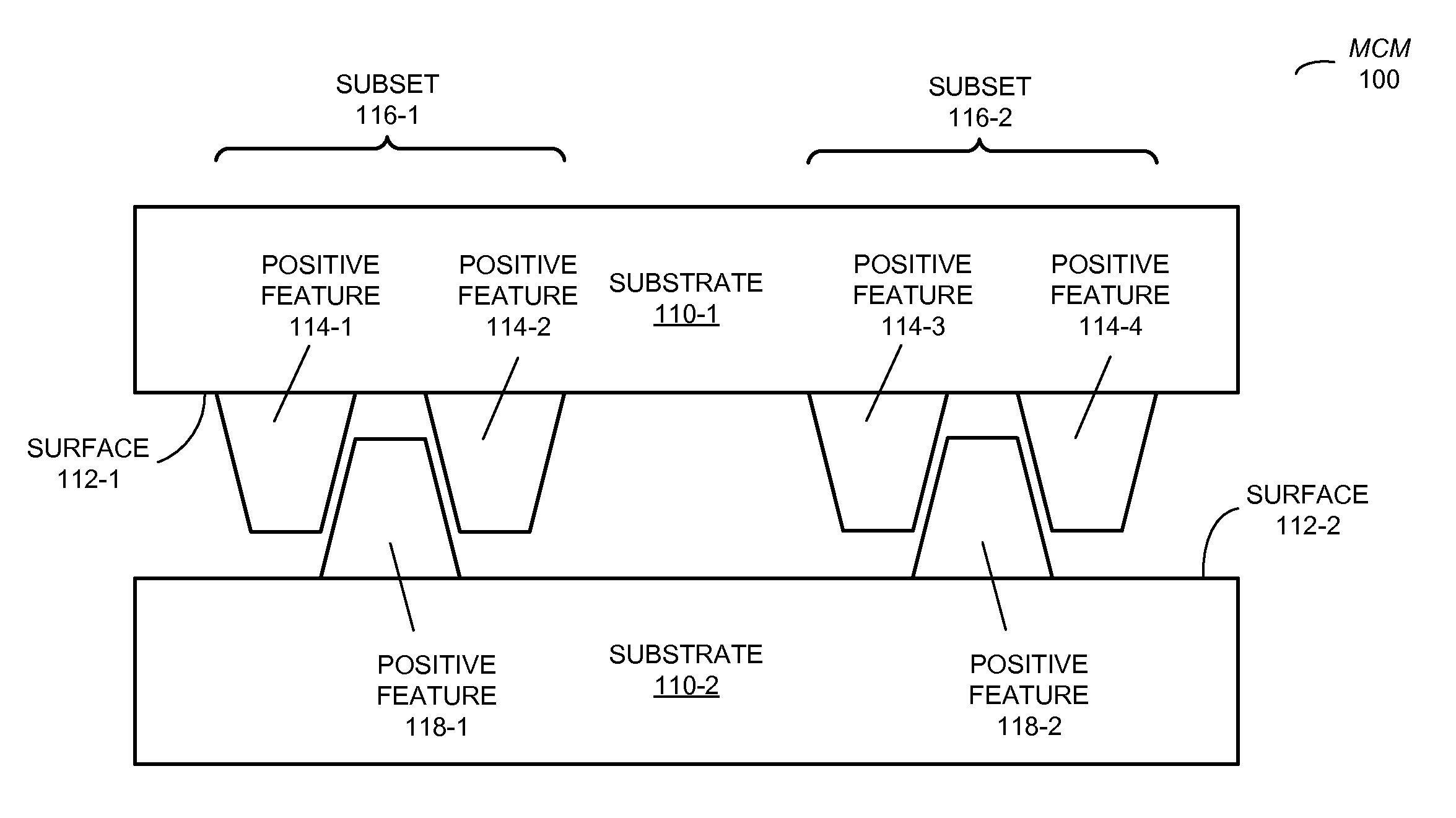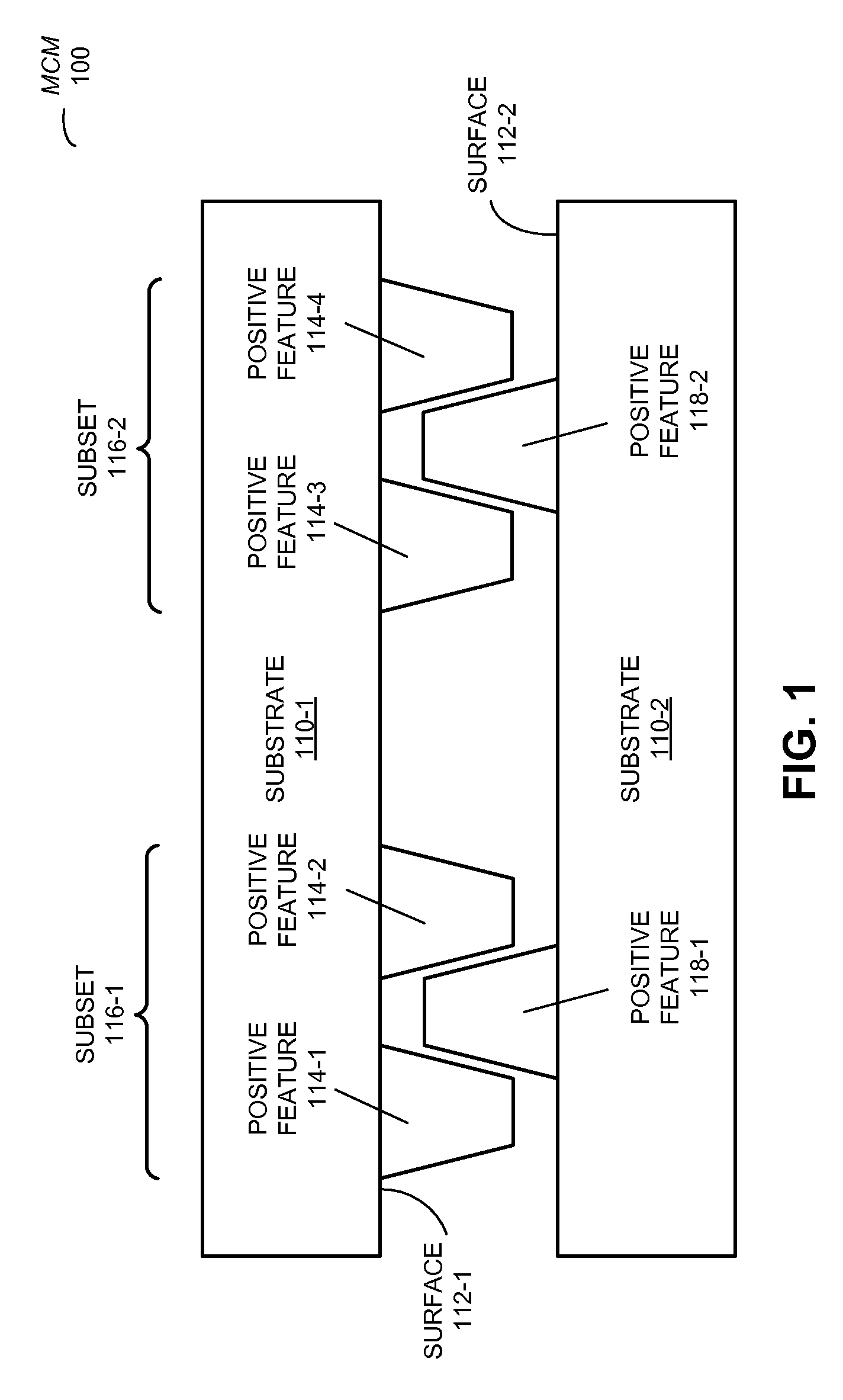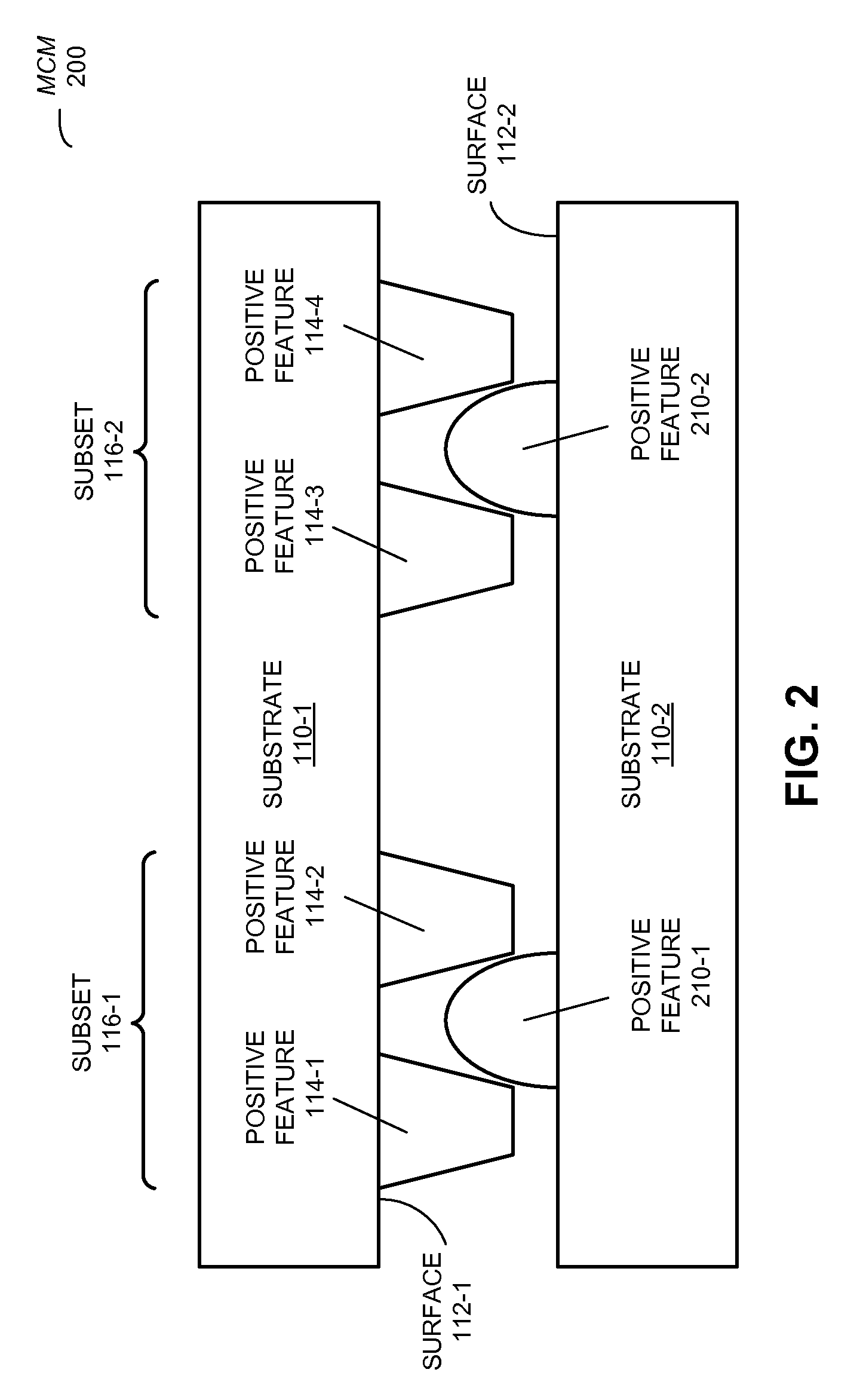Alignment structures for integrated-circuit packaging
a technology of integrated circuits and alignment structures, which is applied in the direction of electrical equipment, semiconductor devices, semiconductor/solid-state device details, etc., can solve the problems of complicated assembly, high cost of ball-and-pit alignment techniques, and difficult and expensive mcm assembly, so as to facilitate the assembly of mcm, reduce symmetry, and increase elastic modulus
- Summary
- Abstract
- Description
- Claims
- Application Information
AI Technical Summary
Benefits of technology
Problems solved by technology
Method used
Image
Examples
Embodiment Construction
[0033]Embodiments of a multi-chip module (MCM) that includes alignment features, and a technique for fabricating the MCM are described. This MCM includes at least two substrates having facing surfaces with positive features disposed on them. Note that a given positive feature on either of the surfaces protrudes above the surface. Furthermore, the two substrates are mechanically coupled by these positive features. In particular, a given one of the positive features on one of the surfaces mates with a given subset of the positive features on the other of the surfaces. Additionally, the given subset of the positive features includes two or more of the positive features.
[0034]These alignment features in the MCM may facilitate lower-cost assembly and improved alignment of components in the MCM. In particular, by using the positive features, problems associated with assembly and alignment in the MCM may be improved or solved. For example, by using two components there are fewer degrees of...
PUM
 Login to View More
Login to View More Abstract
Description
Claims
Application Information
 Login to View More
Login to View More - R&D
- Intellectual Property
- Life Sciences
- Materials
- Tech Scout
- Unparalleled Data Quality
- Higher Quality Content
- 60% Fewer Hallucinations
Browse by: Latest US Patents, China's latest patents, Technical Efficacy Thesaurus, Application Domain, Technology Topic, Popular Technical Reports.
© 2025 PatSnap. All rights reserved.Legal|Privacy policy|Modern Slavery Act Transparency Statement|Sitemap|About US| Contact US: help@patsnap.com



